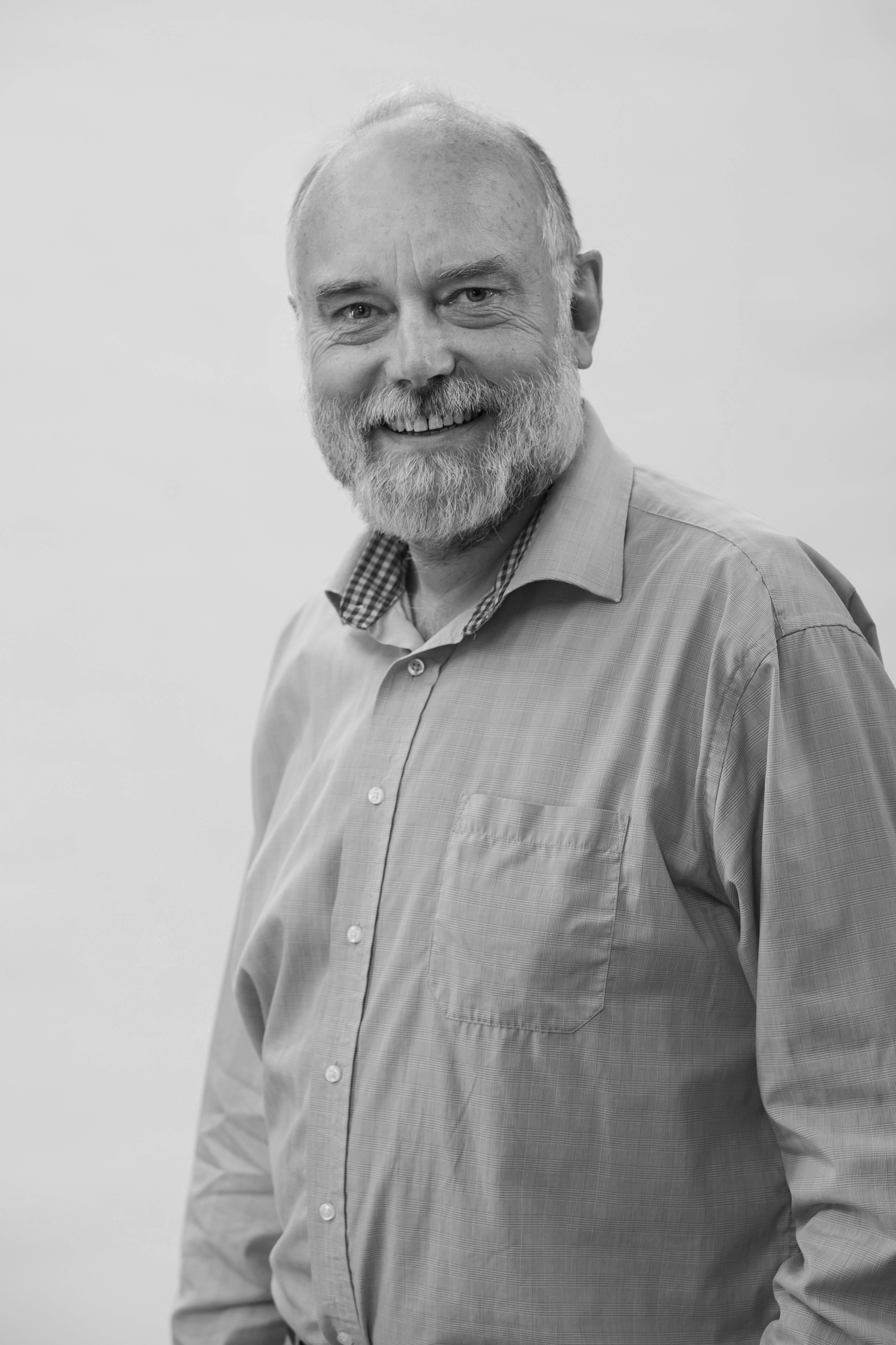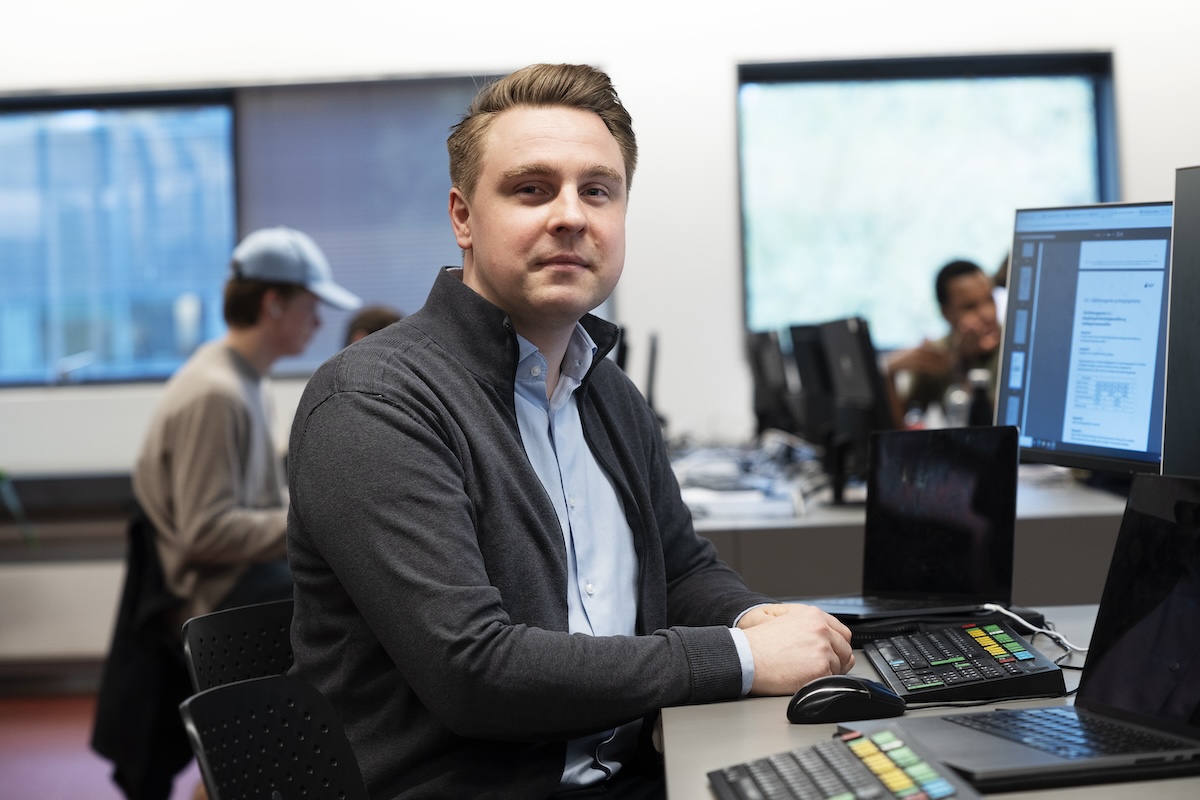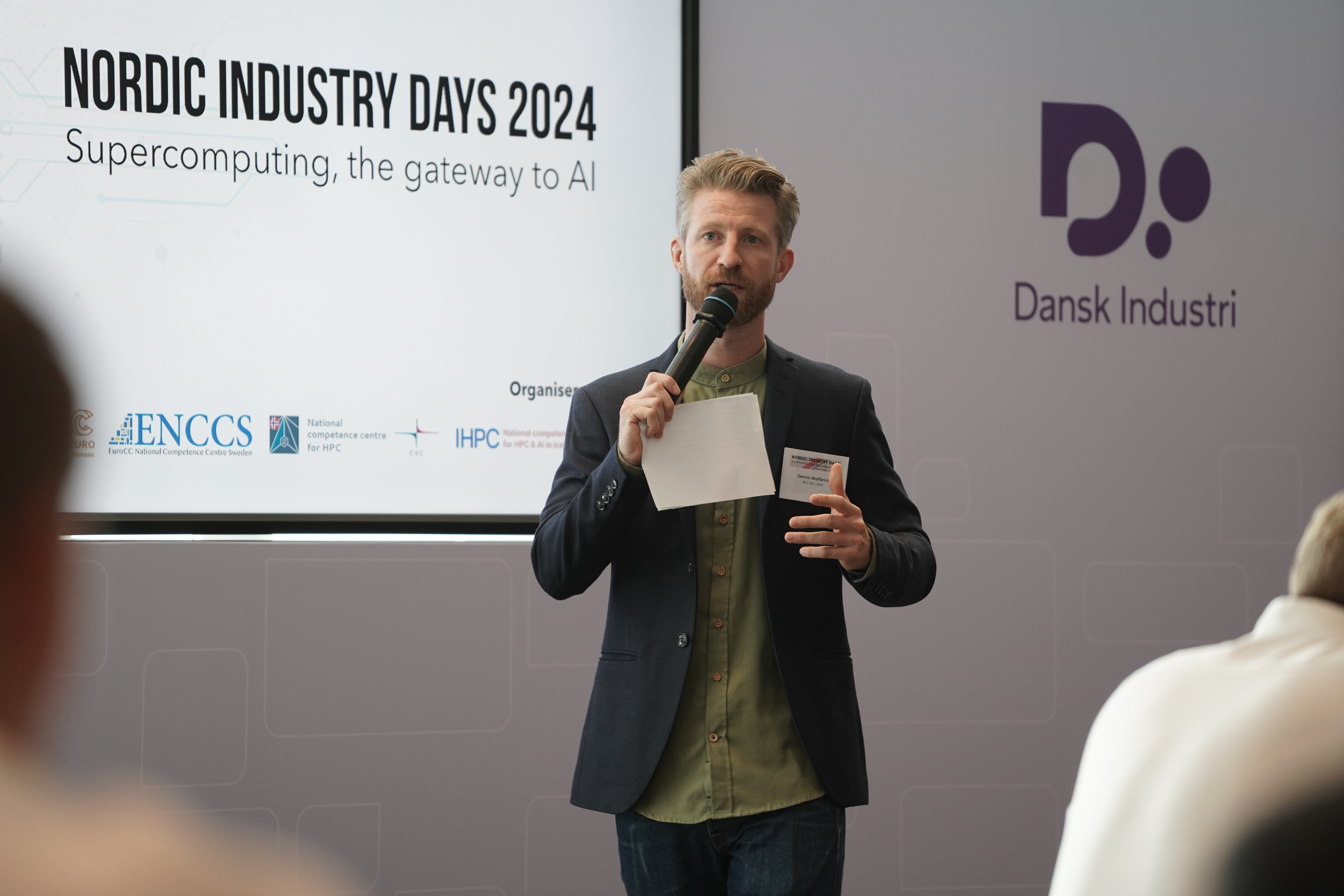
In May 2019, DeiC's board set up a working group with participation from all universities, which was to advise the board on the future Danish landscape for High Performance Computing (HPC). The working group made their recommendations in September of the same year, and the universities and DeiC have since worked to realize them and establish collaboration agreements for the coming years.
That work has now fallen into place, and a plan has been drawn up for the Danish HPC landscape of the future.

John Renner Hansen.
DeiC takes on the role of coordinator between the various HPC facilities and will work with the consortia behind the operation of the facilities to spread awareness of and use of the national infrastructure.
"With the agreements, we have taken a large and important step in establishing a national collaboration across universities that will give all researchers and students at Danish universities access to modern digital research infrastructure", says DeiC's Chairman of the Board John Renner Hansen.
"It's new, it's ambitious, and we look forward to the results of the collaboration and the investments."
Four HPC types in the national landscape
Arbejdsgruppen anbefalede etablering og drift af fire forskellige computerarkitekturer. Desuden skal der bygges et system, der binder alle ressourcerne sammen via en national platform og som derved understøtter tankegangen om HPC-as-a-Service, hvilket vil gøre det nemt for den enkelte forsker at få adgang til ressourcerne.
Strukturen i det nationale HPC-landskab kommer til at se således ud:
The working group recommended the establishment and operation of four different computer architectures. In addition, a system must be built that connects all the resources together via a national platform and which thereby supports the thinking about HPC-as-a-Service, which will make it easy for the individual researcher to access the resources.
The structure of the national HPC landscape will look like this:
Type 1 (Interactive HPC) is in a national context a new type of plant, whose characteristic is an interactive approach with a focus on ensuring low barriers to use. This type may be the first acquaintance with HPC when the individual researcher's own laptop or desktop computer is insufficient due to lack of computing power, storage space, or memory. However, experienced users will also use this type of system for e.g. Machine Learning, AI and more, as well as prototyping and idea development. It may also be students' first approach to HPC facilities.
The facility is operated by a consortium consisting of the University of Southern Denmark, Aalborg University and Aarhus University. The operation is divided into systems at both the University of Southern Denmark and Aalborg University, while Aarhus University will also be involved in providing support and helping new users get started.
Type 1 is ready to receive users right now. Resources and tools will be expanded in the coming period.
Type 2 (Throughput HPC) is a machine type with a large number of cores that can run many simultaneous calculations in a job and which is intended for handling large amounts of data.
Facilities of this type have typically been used in health sciences, chemistry, physics and bioinformatics, but can also be used in other disciplines with large amounts of data, such as financial calculations and simulations.
Behind the operation of the type 2 plant is a consortium with Aarhus University, the Technical University of Denmark and the University of Copenhagen. The resources are provided by Computerome 2, which is jointly owned by DTU and KU, by GenomeDK at Aarhus University, and by Sophia, which is run by DTU.
Type 2 is ready to receive the first users.
Type 3 (Large Memory HPC) is a system type that is suitable for computational problems with relatively few CPU cores and large amounts of memory that can be accessed from all cores. These types of plants are traditionally used across many disciplines such as physics, bio-science, simulations in the technical field, molecular dynamics, chemistry and weather forecasting.
The Type 3 plant will be operated by the University of Southern Denmark. Purchasing and construction of the plant has just begun, and it is expected to be able to receive the first users on 1 March 2021.
Type 4 (Accelerated HPC & Capability HPC) is a type of system whose primary computing capacity comes from accelerators of various kinds. The primary purpose of establishing the Type 4 computer is to provide an opportunity to test alternative accelerator solutions and research the application of future HPC technologies for both hardware and software. The system is not as such a production plant, but more an HPC laboratory. However, it will be open to researchers who can utilize this technology to perform computational tasks on the computer.
The Type 4 plant is under construction and is expected to be ready for operation at the end of 2021. The plant is being developed and will be operated by KU. Behind the project is a collaboration between ITU, RUC and KU.
“The overall landscape and the technological choices will offer a wide range of opportunities for researchers, but also increase the technical competence in the field. We will emphasize collaboration and knowledge sharing between the various facilities and our international partners, so that we collectively obtain the knowledge that prepares us for the technological future, for the benefit of research, ”says Eske Christiansen, HPC head DeiC.
The researcher in focus
HPC will thus also become more accessible to researchers who have so far rarely used the traditional supercomputers, for example in the humanities.
"HPC can contribute to my research in two major areas," explains Zhiru Sun, assistant professor at the University of Southern Denmark. Her research moves across the humanities, learning technology and data science.
“On the one hand, HPC can accelerate analyzes of large amounts of data. In connection with one of my research projects dealing with digital learning during the current pandemic, I anticipate that I will be collecting large amounts of data on students' digital learning behaviors. It is my opinion that HPC will make the data analysis process much faster. On the other hand, HPC makes it possible to analyze large amounts of unstructured data such as text, image, sound and video data, which is the most common form of data for research in the humanities. ”
Project to facilitate the startup
To support the construction of the national HPC landscape, DeiC's board has also launched a project that currently goes under the working name Project 5. The project's purpose is to create a unified online platform that will give researchers simple and secure access to the four computer types, as well as manage the resources at the individual facilities.
Behind the project is a consortium between the University of Southern Denmark, Aarhus University and the Technical University of Denmark, which will collaborate with DeiC and the parties behind the operation of the 4 plant types to develop the platform. The project starts with a workshop that will help determine the project.
The international dimension
Denmark is also participating in the international supercomputer project called LUMI (Large Unified Modern Infrastructure). The project is a collaboration involving ten countries to operate one of the world's most powerful supercomputers, to be located in Finland.
Access to the Danish part of LUMI will be handled in the same way as access to the facilities in Denmark.
- Read more here: Now the work with the supercomputer LUMI begins.
The financing
The investment in the digital research infrastructure is a joint venture between the universities and the Ministry of Education and Research, based on the "Strategy for National Cooperation on Digital Research Infrastructure", which was published in December 2018.
The starting point is that it must be free for the individual researcher to gain access to the infrastructure, and that all the scientific fields must have access to it.
The universities and the Ministry of Education and Research are financing half of the investment each, and the funds for 2021 have just been secured with the allocation of DKK 15.3 million. from the Research Reserve to DeiC.
"The ambitions for development in the coming years are great, and with the newly approved funds from the Research Reserve, the universities' collaboration through DeiC will be able to expand the infrastructure even more next year, so we give researchers a good position in international competition" DeiC's Chairman of the Board John Renner Hansen.
More information
If you are interested in knowing more about the national HPC landscape and the individual HPC facilities, please contact the following:
- DeiC and the national collaboration: Chairman of the Board John Renner Hansen, renner@adm.ku.dkk, telephone 28755327
- The national HPC landscape, incl LUMI: HPC Chief Eske Christiansen, eske.christiansen@deic.dk, telephone 93510048
- Types 1 and 3, Director of eScience Center, Professor Claudio Pica, SDU pica@cp3.dias.sdu.dk
- Type 2, System Administrator Dan Søndergaard, AU das@biomed.au.dk
- Type 4, System Administrator Hans Henrik Happe, KU happe@science.ku.dk




